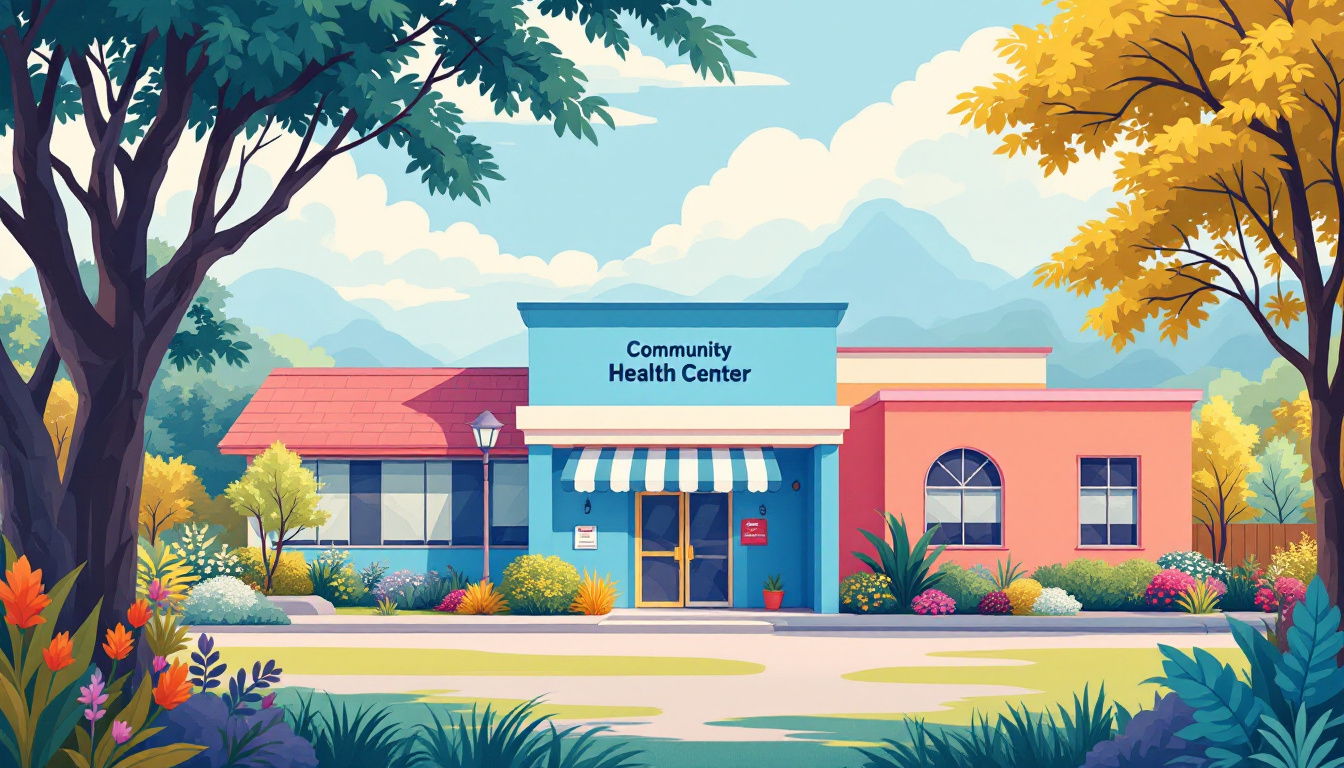The role of community health programs in improving access to care
March 18, 2025
Breaking Down Barriers: Community Health Programs and Access to Care


An Overview of Community Health Programs
Community health programs have emerged as vital components of healthcare systems, particularly in providing care to underserved populations. By addressing social determinants of health and improving access to healthcare services, these programs play a crucial role in enhancing health equity and ensuring that all individuals receive the care they need. This article explores the functions and significance of community health programs, with a focus on community health centers (CHCs) and community health workers (CHWs), and analyzes their strategies in overcoming barriers and achieving better health outcomes.
The Importance of Community Health Programs

Why are community health programs important?
Community health programs are pivotal in promoting the overall wellness of individuals within a community. These initiatives directly address public health challenges by recognizing the socioeconomic and cultural backgrounds of their target populations, which ensures that health interventions are tailored, relevant, and effective.
Several factors underscore their significance:
- Addressing Health Disparities: Community health programs help mitigate the impact of health disparities, particularly evident during crises like the COVID-19 pandemic, where certain populations faced higher hospitalization rates.
- Preventing Chronic Illnesses: By focusing on preventive care, these programs combat rising rates of obesity and chronic diseases that ultimately drive up healthcare costs.
- Reducing Emergency Care Reliance: Properly implemented community health initiatives can reduce the need for costly emergency services, enabling safer and more effective primary care access.
Ultimately, community health programs improve not only health outcomes but also enhance quality of life. They contribute positively to educational attainment and promote longer life expectancy, reinforcing the essential intersection between health, education, and economic stability within communities.
Functions of Community Health Programs
Community health programs play several crucial roles:
- Provision of Preventive Services: These programs offer screenings, immunizations, and health education, fostering a proactive approach to health.
- Advocacy for Vulnerable Groups: They serve to advocate for at-risk populations, influencing health policies to ensure equitable access to resources.
- Building Community Engagement: Engaging community members in health promotion activities enhances collective ownership of health outcomes.
By performing these functions, community health programs lay the groundwork for improved public health systems, ensuring everyone has the opportunity to achieve their best health.
Benefits of Community-Based Programs

What are the benefits of community-based programs?
Community-based prevention programs offer a range of benefits, including enhanced health education and increased access to resources that empower communities. These initiatives effectively improve health outcomes by actively engaging local residents in their design and implementation.
By fostering trust and strengthening community buy-in, these programs create tailored solutions for various social and health issues. For instance, they address the root causes of problems like drug misuse, violence, and chronic diseases, preventing these issues from escalating.
Community Engagement
Active participation from community members ensures that initiatives are culturally relevant and reflect local needs and preferences. This engagement is crucial for promoting health literacy and enabling residents to take charge of their health.
Tailored Health Solutions
While challenges such as funding limitations and the need for ongoing evaluation persist, the advantages of community-based programs are evident. They not only enhance social wellbeing but also improve overall health outcomes within communities. By prioritizing community needs and leveraging local resources, these programs pave the way for sustainable health improvements.
Community Health Centers: A Pillar for Underserved Areas

How can community health centers benefit individuals in underserved areas?
Community health centers (FQHCs) play a crucial role in enhancing healthcare access for individuals in underserved areas. They provide a comprehensive array of services, including:
- Preventive care: Regular screenings and vaccinations help detect health issues early.
- Chronic disease management: FQHCs offer ongoing support for diseases like diabetes and hypertension, improving long-term outcomes.
- Mental health support: They provide integrated mental health services, addressing a critical gap in many communities.
- Referrals for specialized care: These centers coordinate with specialty providers to ensure comprehensive treatment options.
Beyond direct services, community health centers are integral in reducing health disparities. They ensure equitable access to healthcare regardless of a patient's financial situation, thus improving public health outcomes.
FQHCs engage actively in outreach and education initiatives that empower community members by raising awareness about health resources and the importance of preventive care. This empowerment fosters greater community health literacy and engagement.
In terms of economic benefits, community health centers contribute to local economies by creating jobs and promoting wellness, reducing overall healthcare costs through effective preventive care strategies.
Furthermore, with the adoption of technological innovations, such as telehealth, these centers have adapted to modern healthcare demands while continuing to advocate for policy enhancements like Medicaid expansion, thereby sustaining and improving access to essential health services for vulnerable populations.
The Multifaceted Roles of Community Health Workers

What roles and functions do community health workers have in primary care?
Community health workers (CHWs) are vital players in the landscape of primary care, particularly when it comes to improving healthcare access for underserved populations. They engage in a variety of functions that enhance both the quality and reach of health services. These roles can be categorized into three primary areas:
- Clinical Services: CHWs perform health assessments and provide remote care, allowing for continuous monitoring of health conditions.
- Community Resource Connections: They link patients to essential community resources, such as transportation and food assistance, enabling comprehensive support that extends beyond medical care.
- Health Education and Coaching: CHWs serve as educators, not only informing patients about health topics but also coaching them on how to manage their health better.
How do community health workers contribute to health access?
By acting as liaisons between patients and healthcare systems, CHWs significantly boost access to care. They educate communities about available health services, ensuring that people understand how to utilize these resources effectively. Furthermore, CHWs advocate for the health needs of individuals, ensuring that their concerns reach healthcare providers.
Their efforts help close the gaps in healthcare delivery by addressing language barriers, cultural nuances, and other factors that often impede access. This holistic approach not only improves individual health outcomes but also promotes the overall well-being of communities, demonstrating the crucial role that CHWs play in fostering health equity.
Addressing Barriers to Healthcare Access
Why is improving access to healthcare important?
Improving access to healthcare is crucial as it directly influences individuals' physical, mental, and social well-being. Access to affordable and quality healthcare allows people to receive necessary treatments and preventive care, reducing the likelihood of worse health outcomes.
Despite significant progress, such as the decrease in the uninsured rate due to the Affordable Care Act, millions still lack insurance, leading to disparities in accessing primary and mental health care.
High costs, geographical barriers, and provider shortages exacerbate these challenges, particularly for low-income and marginalized groups.
Ultimately, enhancing access to healthcare can improve overall population health and reduce inequalities in health outcomes across different communities.
What barriers do certain populations face?
Various populations encounter unique challenges that impede their access to healthcare services. Here are some of the key barriers:
- Financial Constraints: Individuals in low-income brackets often struggle with healthcare costs, leading them to forgo necessary treatments.
- Geographical Barriers: Rural residents frequently have to travel long distances, with a median distance of 7.4 miles to primary care providers, compared to 4.4 miles for urban dwellers.
- Provider Shortages: A lack of healthcare providers in rural areas intensifies the accessibility issues for residents needing immediate care.
- Cultural and Language Barriers: Minority groups may face difficulties navigating the healthcare system due to language differences or cultural misunderstandings, discouraging them from seeking care.
How do community health programs provide solutions?
Community health programs (CHPs) emerge as effective solutions to these barriers, improving access and equity through various strategies:
- Community Health Workers (CHWs): By acting as liaisons, CHWs facilitate communication between healthcare providers and marginalized groups, enhancing navigation through the healthcare system.
- Localized Services: Community health centers (CHCs) address geographical barriers by providing care directly within underserved communities, ensuring services are both accessible and affordable.
- Educational Initiatives: CHPs engage residents through health education, promoting awareness about how to access available resources and the importance of regular preventative care.
- Advocacy: Community health programs advocate for policy changes at local and federal levels, thereby ensuring that health services are aligned with the needs of at-risk populations.
Through these focused interventions, community health programs play a vital role in bridging the gap that many disadvantaged populations experience in accessing healthcare.
Strategies for Reducing Health Disparities

Methodologies Used by Community Health Programs
Community health programs implement various strategies to address health disparities within communities. One effective methodology involves tailored outreach initiatives designed to reach underserved populations in both urban and rural settings. These initiatives often employ Community Health Workers (CHWs) to bridge gaps between healthcare systems and community members. CHWs provide vital support by educating residents about available health resources and assisting them in navigating healthcare services.
Moreover, community participation is crucial. Programs actively engage local stakeholders in planning and evaluating health interventions, allowing them to address unique health needs comprehensively. This participatory approach fosters trust and encourages community members to seek care, ultimately leading to better health outcomes.
Impact on Health Equity
The impact of these strategies is significant, particularly in improving health equity. By ensuring equitable access to healthcare services, programs like Community Health Centers (CHCs) facilitate care for vulnerable populations. CHCs provide comprehensive, affordable care, thus enhancing treatment availability regardless of patients' insurance status.
Additionally, community health initiatives promote preventative care and education, which significantly reduce long-term healthcare costs by minimizing reliance on emergency services. By focusing on social determinants of health, these programs empower communities to address barriers such as economic factors and health literacy, which are essential for achieving health equity.
Socioeconomic and Cultural Dimensions
Social Determinants of Health
Community health programs (CHPs) play a crucial role in addressing the social determinants of health (SDOH) that significantly impact healthcare access and outcomes. Factors such as income level, education, transportation, and housing all influence an individual's ability to access healthcare services. By offering resources such as transportation assistance and integrating services that tackle these barriers, CHPs promote health equity. Additionally, community health workers (CHWs) facilitate connections to social services that help mitigate the effects of these social determinants, ensuring that vulnerable populations receive the support they require.
Impact of Community Participation
The engagement of community members in health initiatives is vital for improving health outcomes. Participatory approaches empower individuals to be actively involved in planning and implementing health programs, fostering a sense of ownership. This collective effort enhances social capital, builds trust, and improves health literacy among residents. Studies indicate that when communities take part in health decision-making, there are notable improvements in health outcomes and a reduction in health disparities, showcasing the power of community involvement in advancing public health.
Success Stories and Evidence-Based Outcomes
Examples of Successful Initiatives
Community health programs have demonstrated their effectiveness in addressing healthcare access issues across diverse populations. For instance, the Community Health Action Team (CHAT) in northeast Wisconsin has successfully reached out to farming families with inadequate insurance, providing screenings and connecting them to vital health and social services. This initiative alone identified over 200 people in need of acute care and facilitated numerous referrals to social services.
In South Carolina, the Healthy Columbia initiative has mobilized volunteers to enhance access to care through local screenings and community garden development. Such community organizing effectively addresses local health disparities, showcasing how grassroots movements can make significant impacts.
Evidence of Improved Health Outcomes
Research supports the positive outcomes of community health programs, highlighting their role in fostering health equity. A nationwide study indicated that over 30 million individuals rely on Community Health Centers (CHCs), which provide affordable health services and are particularly effective in improving access for low-income and uninsured populations. An investment in CHCs correlated with a significant increase in healthcare access, especially for marginalized groups.
Moreover, studies show that integrating Community Health Workers (CHWs) can lead to substantial healthcare cost savings by steering patients away from emergency services and towards preventive care. For every dollar spent on CHW initiatives, there is a reported return on investment of approximately $2.28, reflecting significant financial and health benefits for the communities served.
These success stories and the robust evidence base illustrate the crucial role community health programs play in enhancing healthcare access and improving overall health outcomes.
Final Thoughts
Community health programs, through their diverse roles and outputs, demonstrate remarkable potential in advancing healthcare access and promoting health equity. By engaging communities, deploying effective strategies, and employing dedicated workers, these initiatives build robust healthcare landscapes that cater to the unique needs of populations. Continued investment and policy support are imperative to sustain and scale these efforts, ensuring that the holistic health needs of underserved and marginalized groups are consistently met across the nation.
References
- Why Community Health Is Important for Public Health
- The Role of Community Health Centers in American Healthcare
- Role of Community Health Workers - NHLBI
- Community participation in health services development ...
- What is a Community Health Center? - NACHC
- Community Health Workers' Role Grows With Evidence - Penn LDI
- Enablers and barriers of community health programs for improved ...






























































.jpeg)










































































































































































































.avif)























































.jpeg)

































































.jpeg)














.jpg)









































.jpeg)









































































.avif)




.avif)

















































.avif)







































































































































































